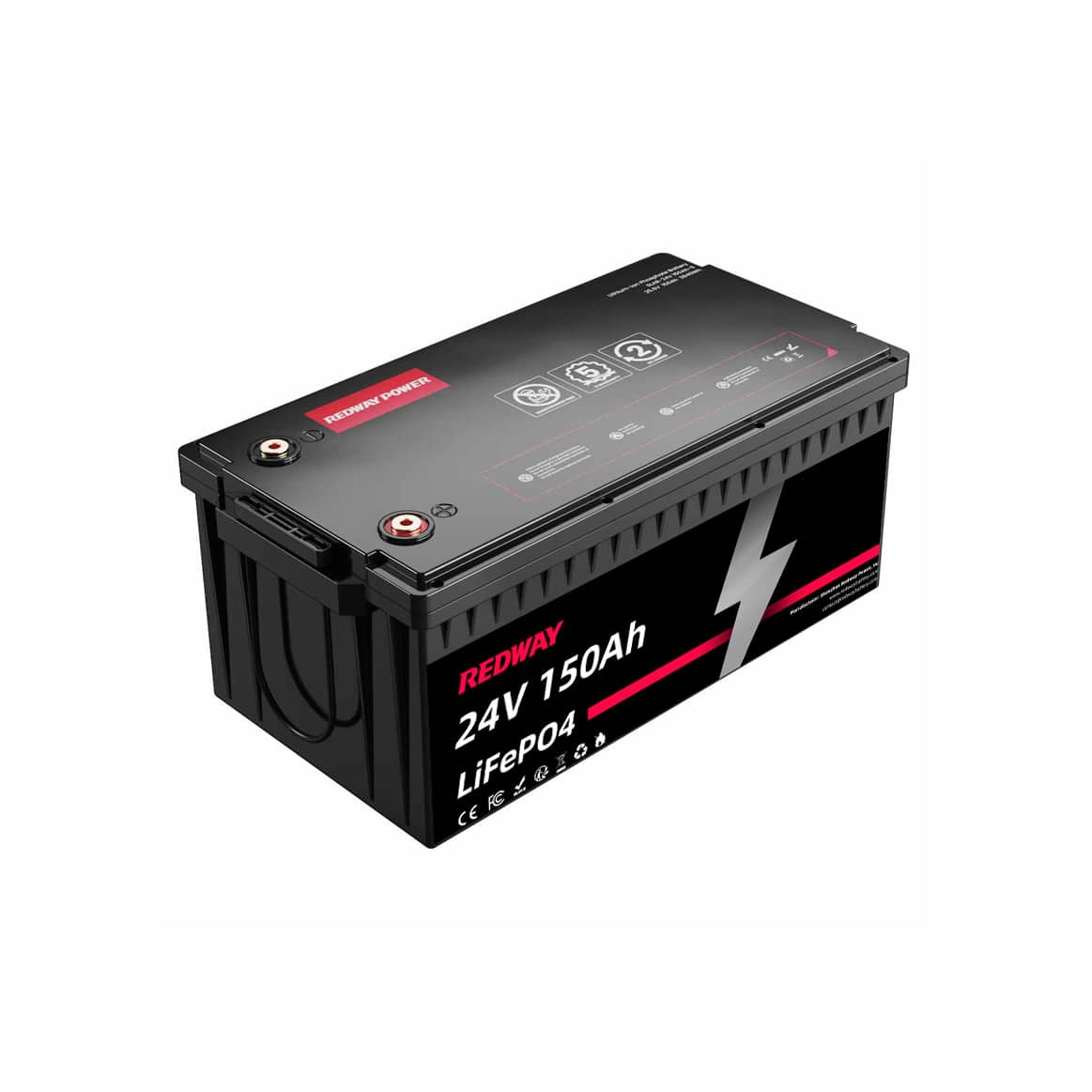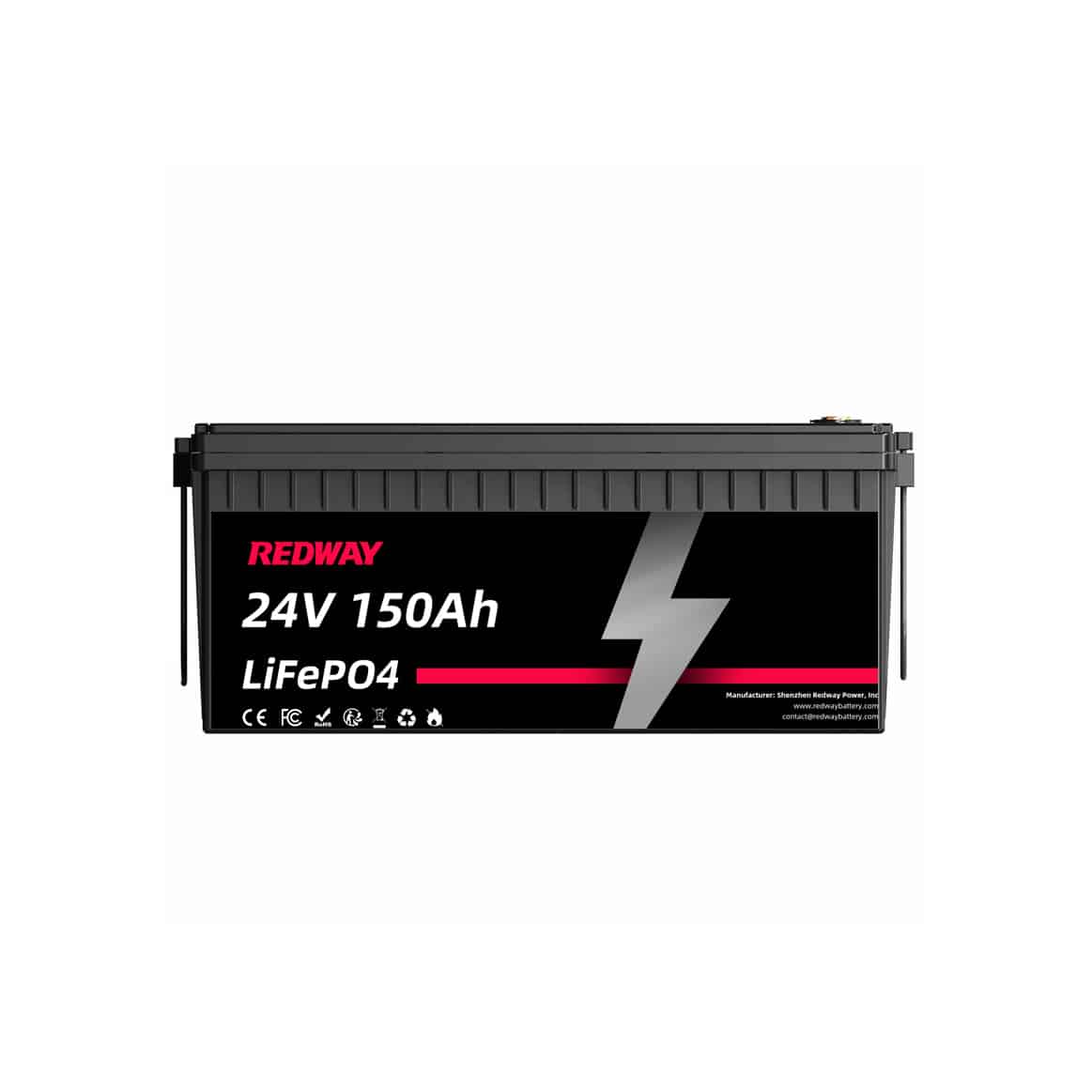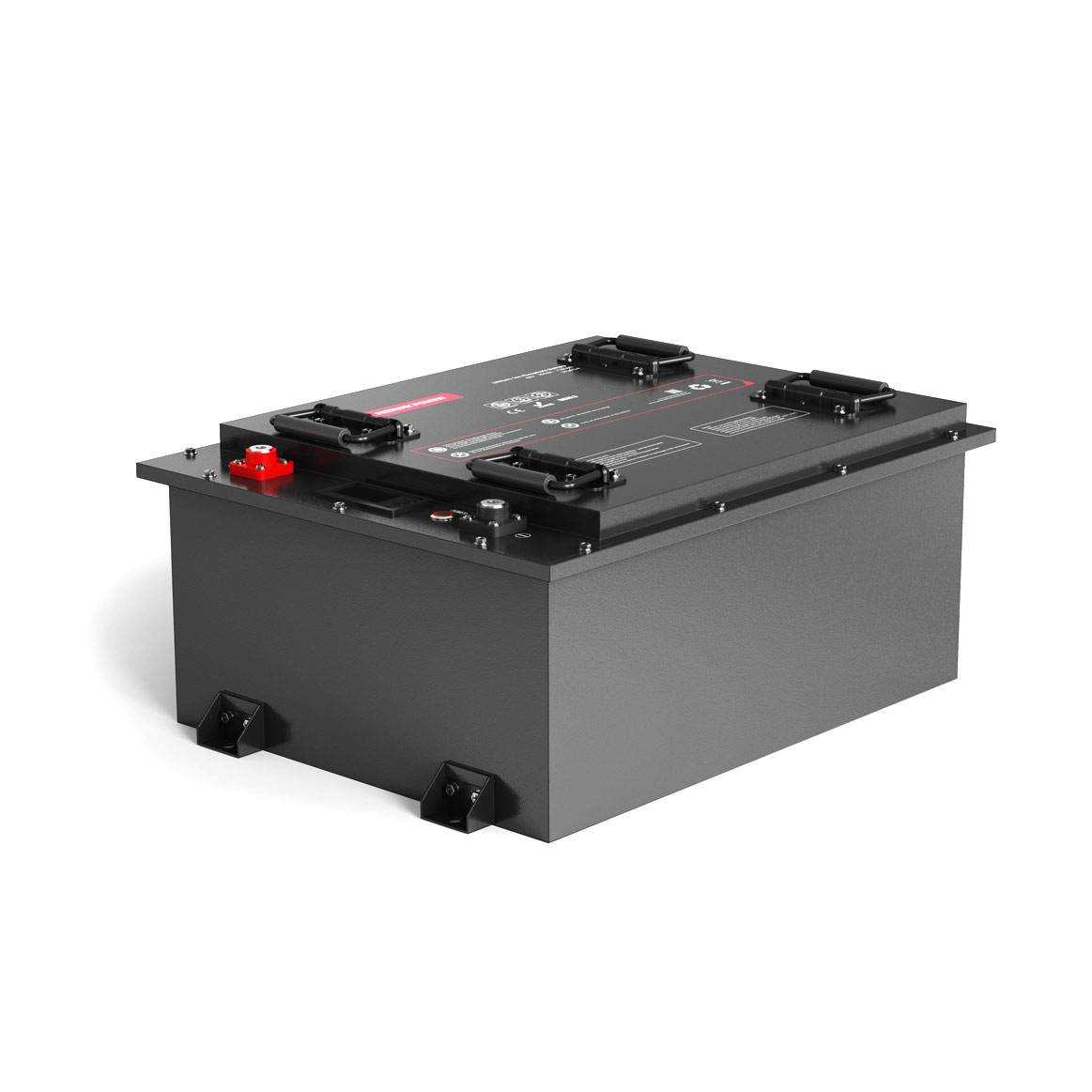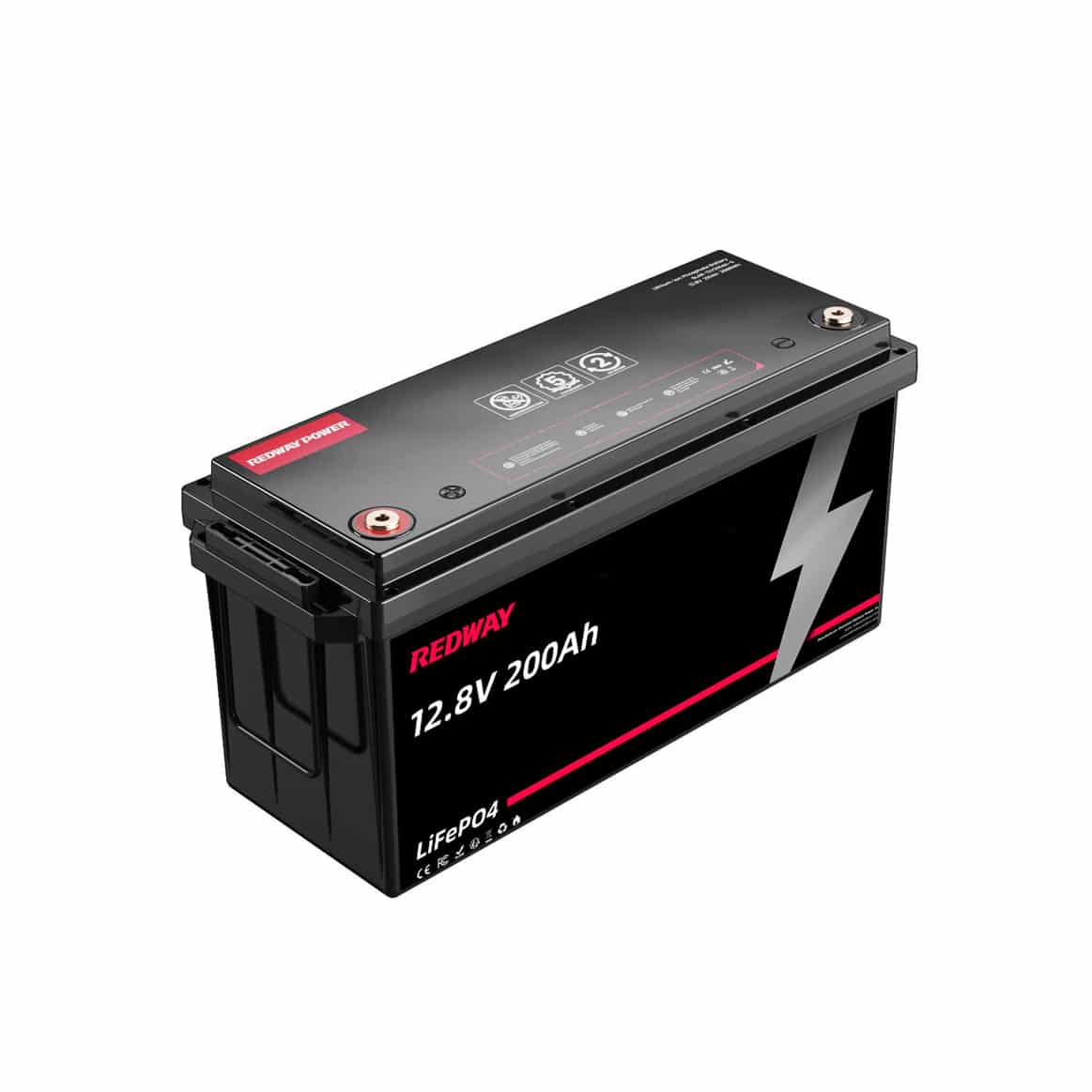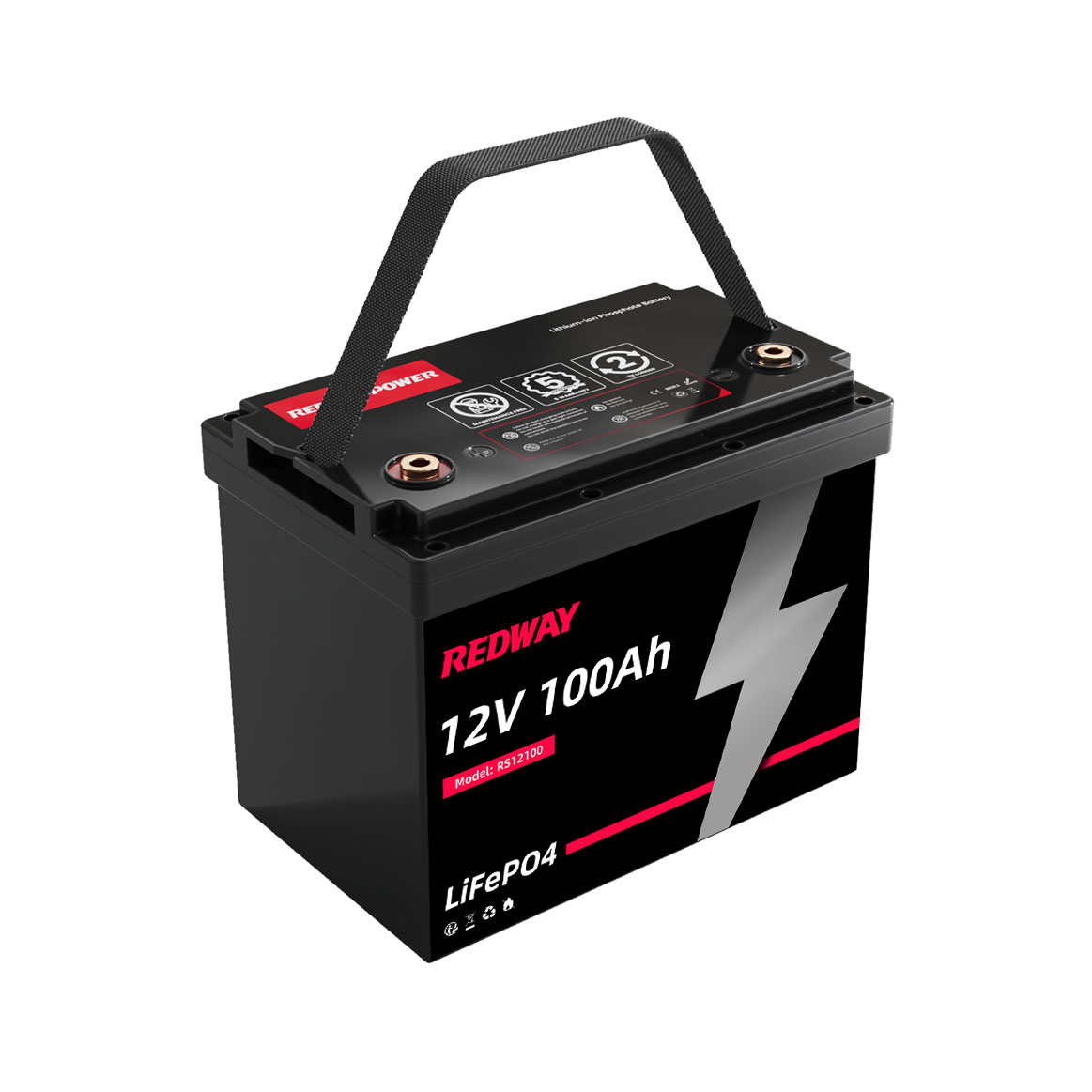Description
The Redway 25.6V 150Ah LiFePO4 Battery is a premium lithium iron phosphate power solution designed for reliable and efficient energy storage. Delivering a nominal energy capacity of 3840Wh, this battery offers outstanding performance for solar power systems, electric vehicles, backup power, and various industrial applications.
Featuring a nominal voltage of 25.6V and a capacity of 150Ah, it supports continuous charge and discharge currents up to 100A, ensuring stable power delivery under demanding conditions. Its robust ABS casing is IP65-rated, providing dust-tight and waterproof protection, perfect for use in diverse environments.
Weighing just 25 kg (55 lbs), the battery is compact and lightweight compared to traditional lead-acid alternatives, while boasting a long design life of 10 years and more than 5000 charge cycles at 80% Depth of Discharge (DOD). This durability makes it a cost-effective and eco-friendly choice.
Equipped with a JBD/DALY Battery Management System (BMS), the battery safeguards against overcharging, over-discharging, and short circuits for optimal safety and reliability. Optional upgrades include Bluetooth, GPS tracking, LCD display, and self-heating features, enhancing versatility and remote monitoring capabilities.
Certified to UL1642, IEC62619, CE, UN38.3, and MSDS standards, the Redway 25.6V 150Ah LiFePO4 Battery is a trusted, high-quality energy solution backed by a 3-year warranty.
Know More
Why Choose a 24V 150Ah LiFePO4 Lithium Battery Manufacturer (BCI Group 8D) for Your Energy Storage Needs?
A 24V 150Ah LiFePO4 lithium battery in BCI Group 8D format delivers high-capacity, long-life, and robust safety for solar, marine, RV, and industrial backup power. Redway Battery leads with OEM/ODM customization, advanced BMS, and global certifications, making it the premier choice for B2B, wholesale, and demanding energy projects.
What are the core features of a 24V 150Ah LiFePO4 lithium battery (BCI Group 8D)?
A 24V 150Ah LiFePO4 battery offers 3.84kWh per unit, over 6000 cycles at 80% DOD, and weighs only 25–35 kg—about one-third the weight of comparable lead-acid batteries. Its BCI Group 8D size (523 x 269 x 218 mm) fits industry-standard trays. Redway Battery’s models include a smart BMS, IP65 waterproofing, and flexible OEM/ODM options for terminals, casing, and communication protocols.
Chart: 24V 150Ah LiFePO4 Battery Key Specifications
| Feature |
Value |
| Nominal Voltage |
25.6V |
| Capacity |
150Ah |
| Energy |
3.84kWh |
| Cycle Life |
6000+ |
| Weight |
25–35 kg |
| Dimensions |
523 x 269 x 218 mm (BCI Group 8D) |
| BMS |
Smart (100A/150A/200A, Bluetooth/CAN/RS485 optional) |
| Waterproof |
IP65 |
| Parallel/Series |
Up to 6P/4S (expandable to 30.72kWh) |
| Certifications |
UL1642, CE, UN38.3, IEC |
| Warranty |
3–10 years |
How does a 24V 150Ah LiFePO4 battery compare to lead-acid and AGM batteries?
LiFePO4 batteries offer 5–10 times the lifespan, are 60–70% lighter, and provide 100% usable capacity compared to 50% for lead-acid. They deliver stable voltage, fast charging, and require no maintenance. Redway Battery’s LiFePO4 solutions outperform traditional batteries in efficiency, safety, and total cost of ownership.
Why is a smart BMS critical for 24V 150Ah LiFePO4 batteries in B2B applications?
A smart BMS ensures cell balancing, overcharge/discharge protection, and thermal management. Redway Battery’s BMS supports Bluetooth, CAN, RS485, and more, enabling real-time monitoring, remote diagnostics, and seamless integration with solar, marine, and off-grid systems. This guarantees maximum safety, longevity, and system compatibility.
What applications are ideal for a 24V 150Ah LiFePO4 BCI Group 8D battery?
These batteries power solar energy storage, marine systems, RVs, off-grid cabins, backup UPS, electric pallet jacks, and industrial equipment. Their high output, deep cycling, and robust build make them perfect for both mobile and stationary power needs in demanding environments.
How customizable are 24V 150Ah LiFePO4 batteries for OEM/ODM and wholesale buyers?
Redway Battery and leading factories offer complete OEM/ODM customization—capacity, voltage, BMS features, shell material, communication protocols, and branding. MOQ starts at 5–10 units, with delivery in 15–25 days. Custom labeling, user manuals, and packaging are available for private labeling and seamless integration.
What certifications and quality standards do these batteries meet?
Redway Battery’s 24V 150Ah LiFePO4 batteries are certified to UL1642, CE, UN38.3, IEC, and ISO9001 standards. IP65 waterproofing ensures durability in harsh environments. Rigorous QC and traceability guarantee reliability for global B2B and OEM clients.
Chart: Certifications and Standards
| Certification |
Coverage |
| UL1642 |
Cell/Battery Safety |
| CE |
European Safety/EMC |
| UN38.3 |
Lithium Transport |
| IEC |
Battery Safety |
| ISO9001 |
Factory Quality |
How do manufacturers like Redway Battery support B2B and wholesale buyers?
Redway Battery provides engineering support, fast prototyping, and flexible pricing. Their Dongguan factory offers rapid turnaround, global shipping (FOB, EXW, CIF), and payment options (T/T, L/C, PayPal). Technical support and after-sales service ensure smooth integration and satisfaction.
What is the price range and delivery time for wholesale 24V 150Ah LiFePO4 batteries?
Bulk pricing ranges from $600 to $1200 per unit, depending on quantity and customization. Redway Battery’s MOQ is 5–10 units, with typical delivery in 15–25 days. Discounts are available for large orders, and shipping options include sea, air, and land for global reach.
Can 24V 150Ah LiFePO4 batteries be integrated with smart monitoring and IoT systems?
Yes, Redway Battery’s OEM solutions support Bluetooth, WiFi, CAN, RS485, and more for remote monitoring and IoT integration. Optional LCD/LED displays and app connectivity enable real-time diagnostics, predictive maintenance, and remote management—ideal for advanced solar, marine, and off-grid deployments.
Redway Battery Expert Views
“Redway Battery’s 24V 150Ah LiFePO4 Group 8D battery is engineered for reliability, safety, and adaptability. Our OEM/ODM services empower clients to innovate in solar, marine, and energy storage. With advanced BMS, global certifications, and rapid delivery, we ensure every project achieves maximum reliability and performance.”
Conclusion
A 24V 150Ah LiFePO4 lithium battery in BCI Group 8D size from a manufacturer like Redway Battery delivers unmatched safety, longevity, and flexibility for B2B and wholesale applications. With advanced BMS, global certifications, and custom engineering, these batteries drive innovation in solar, marine, and backup power—delivering reliable, scalable, and future-ready energy.
FAQs
What is the cycle life of a 24V 150Ah LiFePO4 battery?
Most deliver 6000+ cycles at 80% DOD, lasting 10 years or more in typical use.
Can I customize the battery for my application?
Yes, Redway Battery offers OEM/ODM customization for voltage, capacity, BMS, and communication protocols.
What certifications do these batteries have?
UL1642, CE, UN38.3, IEC, and ISO9001 ensure global safety and quality compliance.
What is the MOQ and delivery time for wholesale orders?
MOQ is 5–10 units, with delivery in 15–25 days and global shipping options.
Are these batteries compatible with solar, marine, and RV systems?
Absolutely, they integrate seamlessly with solar inverters, marine electronics, RV power systems, and industrial equipment.


